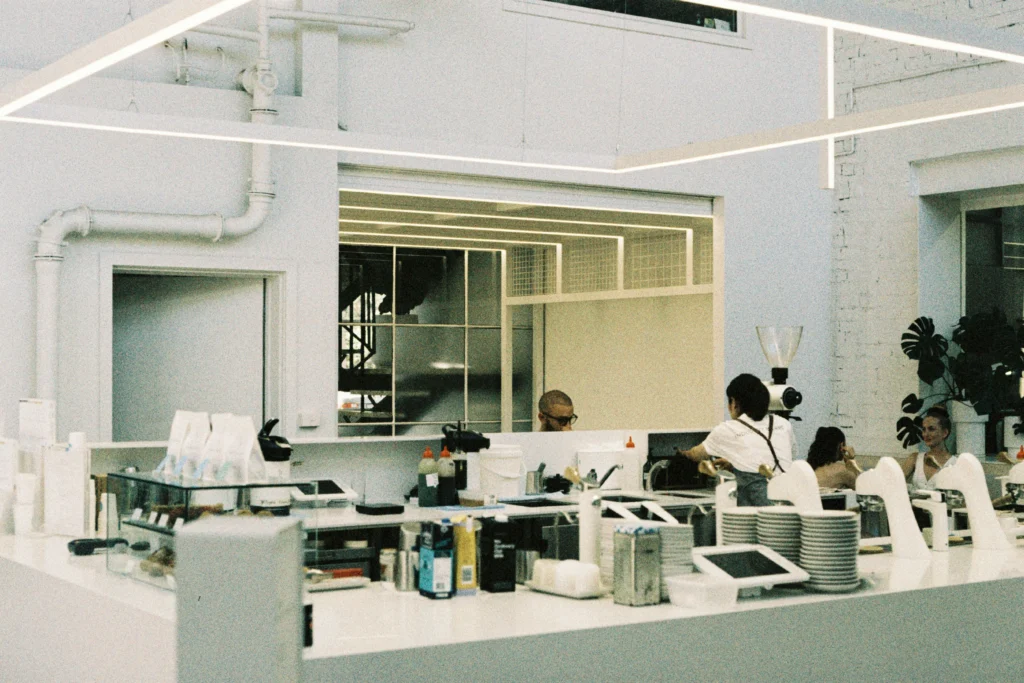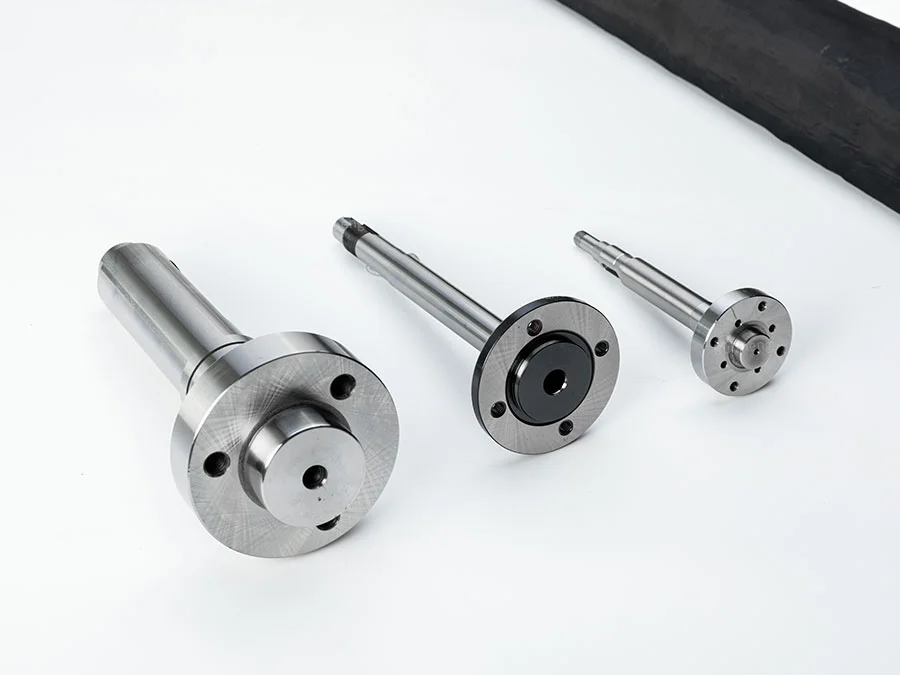
CNC machining centers rely on four key parts—machine bed, spindle system, control panel, and tool changer. These parts work together to provide strength, accuracy, and speed. The machine bed gives a sturdy base. The spindle delivers quick, precise cuts. The control panel guides operations like a brain. The tool changer allows fast, mistake-free tool switches. Precision machining, with tolerances as tight as 0.001mm, is vital for each part’s success. Companies like Ruizheng shine in making these high-precision components. They offer full solutions for industrial needs, using top tools and strict quality checks.
What Defines a CNC Machining Center?
CNC machining centers are the core of modern manufacturing. They combine mechanical know-how with digital control. But what makes a CNC machining center unique? It’s not just automation. It’s the teamwork of four main parts: the machine bed, spindle system, control panel, and tool changer. Each part has a big role in ensuring steady accuracy and efficiency.
The balance between these parts decides how well your machine handles hard, fast tasks. Whether you’re crafting parts for industrial tools or precise machine accessories, the alignment and tight tolerances of these components shape your product’s quality.

We specialize in custom machining of various non-standard shaft parts, flange parts, bearing seats, and other precision mechanical components, widely used in machine tool equipment, core industrial equipment components, industrial robotic arms, humanoid robots, and other high-end manufacturing fields.
Why Is the Machine Bed So Critical to Stability and Accuracy?
What Structural Role Does the Machine Bed Play in a CNC System?
The machine bed is the foundation of any CNC machining center. It supports all other parts—spindle, tool changer, and axes. It must stay firm during operation. It resists shakes and bumps. A well-made bed keeps everything steady and aligned, even when cutting forces are strong.
This base needs super flat surfaces and perfect alignment to keep movements exact. Any tiny flaw can cause errors across the whole system. This matters most in multi-axis setups, where perfect alignment is crucial.
How Does Precision Machining Improve Flatness and Rigidity?
Precision machining boosts the flatness of mounting surfaces and rail alignments. Tolerances as tight as 0.001mm are often needed for high-end systems. Machining accuracy can reach 0.001mm. This level reduces warping from heat and wear over time.
Special techniques, like surface grinding or laser-guided milling, create smooth, even surfaces. These are key for supporting linear guides or ball screws. Without weak spots, movement stays accurate.
Why Is the Spindle System Considered the Heart of CNC Operations?
What Is the Spindle’s Role in Driving Motion and Cutting Precision?
The spindle holds and spins cutting tools. It works at speeds from hundreds to tens of thousands of RPMs. It removes material and keeps tools steady and centered during cuts.
If the spindle shakes or isn’t strong, it can leave chatter marks or size errors on every piece. This is a big problem when working with hard metals or tricky shapes.
What Are the Key Precision Techniques Used in Spindle Production?
Building spindle housings and shafts requires very precise turning, grinding, and balancing steps. High accuracy and strong reliability, suitable for high-speed, high-load conditions—this is key when spindles face side and direct loads at fast speeds.
Materials like hardened alloy steel or stainless steel are often picked. Heat treatments improve wear resistance and strength. Preferred materials include alloy steel, stainless steel, and titanium alloy, with support for heat treatment.
How Does the Control Panel Ensure Intelligent Operation?
Why Is the Control Unit Referred to as the Brain of a CNC Center?
The control panel directs all movements. It handles axis coordination and toolpath execution. It links with sensors, encoders, and safety systems. It turns G-code instructions into real-time actions.
Its housing must protect delicate electronics from dust, shakes, and heat. It also needs to be easy for operators to use. So, its design and layout need careful thought.
How Do Machined Interfaces Contribute to Reliable Control Performance?
Precision-machined control panel housings ensure proper alignment for connectors, screens, emergency stops, and wiring. Misalignments can cause signal problems or machine breakdowns. This happens if heat doesn’t flow well or connections loosen.
Custom-machined aluminum enclosures with tight tolerances improve function and durability. This is vital in industrial settings, where downtime is costly.
What Makes Tool Changers So Dependent on Precision Engineering?
What Function Does an Automatic Tool Changer Serve?
Automatic Tool Changers (ATCs) let your machine swap tools without human help. This is key for complex jobs needing different cutters or drills.
They save time and improve consistency across batches. They do this by removing human error during tool switches.
Why Are Tight Tolerances Crucial for Smooth Tool Changes?
Tool holders must align perfectly with spindle tapers. If not, misloads can damage tools and spindles. Carousel arms or grippers must move within micron-level tolerances for smooth swaps.
Precision machining ensures these parts follow exact paths. This prevents wear or jams, especially when switching heavy tools often.
How Does Integrated Precision Impact Overall Machine Output?
Why Must All Four Components Work in Harmony?
Each part’s accuracy adds up to the system’s overall performance. For example, a machine bed with a 5-micron flaw can cause issues. If the spindle adds 7 microns of error due to imbalance, the total error may exceed the limits for precision manufacturing.
That’s why aligning all parts through precise crafting is essential. They must work as one unit, performing well under tough conditions.
Where Can You Find End-to-End Precision Machining Services for These Components?
If you need a trusted partner for all critical CNC components—from spindles to beds—pick one with skills in multi-axis tolerance control and material engineering.
Foshan Ruizheng Machinery Manufacturing Co., Ltd., founded in 2013, focuses on high-precision shaft parts and custom non-standard components. They use advanced tools like lathes, mills, grinders, and temperature-controlled inspection rooms. They also have robotic loading systems and ISO 9001 certification. They provide full support, from prototype to final checks.
Explore their precision shaft components, built for CNC applications where performance matters most.
You can also check their non-standard flange parts, made for custom assemblies in industrial machinery.
Why Should You Choose Ruizheng as Your CNC Component Partner?
Ruizheng stands out for its technical skills and customer-focused approach:
We excel at customizing non-standard parts based on customers’ 2D/3D drawings. Whether you have detailed CAD drawings or are starting with prototypes, they give fast quotes within 24 hours.
All products go through first-piece inspection, in-process checks, and final inspection before shipping. This ensures every part meets your needs.
A temperature-controlled inspection room ensures measurement accuracy. This delivers steady quality, even for micron-level tolerances.
Long-term clients include global leaders in robotics and automation. They demand top quality.
International logistics include DDP shipping options and bilingual documents. This makes customs clearance easy.
Whether you’re building next-gen machine tools or upgrading existing systems, you need more than parts. You need partners like Ruizheng, who understand how precision machining drives reliability from the core.
FAQ
Q1: Can I order small batch quantities before committing to mass production?
A: Yes, Ruizheng supports prototyping and trial production phases.
Q2: Do you provide assembly tolerance recommendations along with machined parts?
A: Yes, Ruizheng offers assembly tolerance advice.
Q3: Are aerospace or automotive components part of your service scope?
A: No, Ruizheng focuses only on machine tool accessories and industrial equipment parts, not aerospace or automotive sectors.


